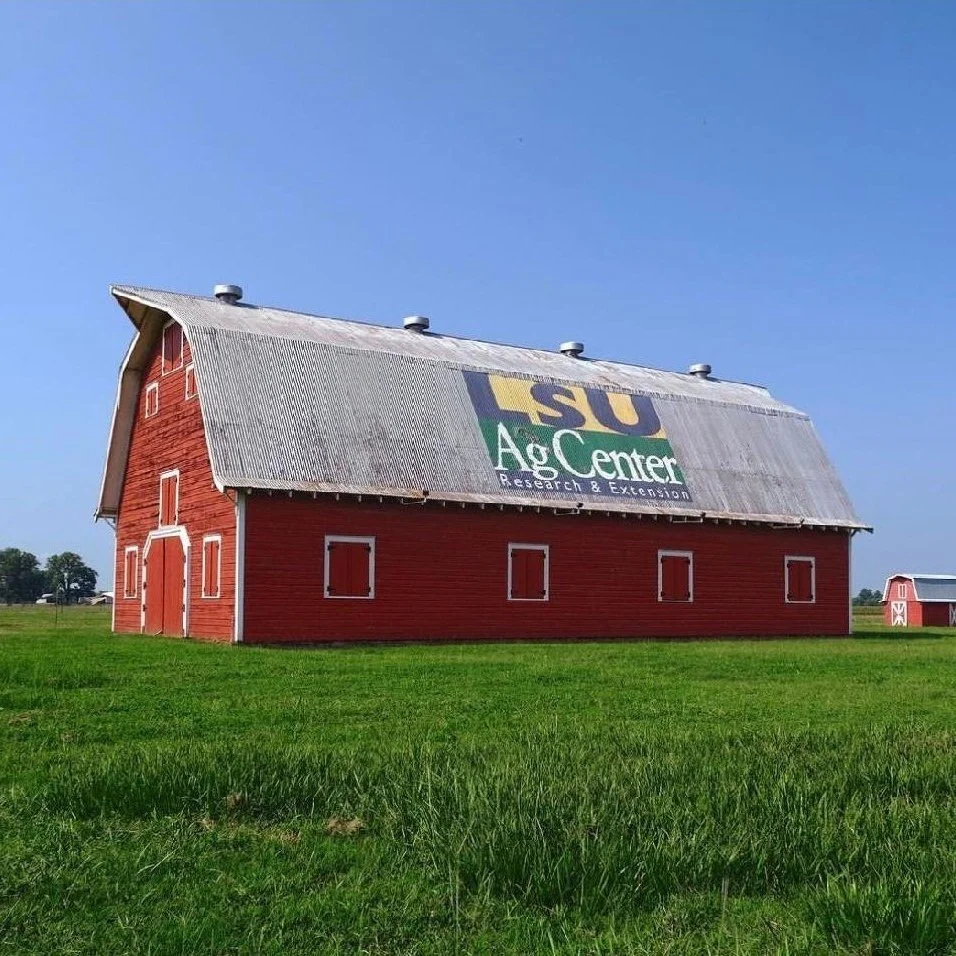If your home was damaged by Hurricane Francine, the tremendous work, expense and stress can mean a daunting and difficult ordeal ahead. But if you restore for more than before, you can return to a stronger, more resilient, comfortable and healthy home.
Read MoreMany areas of Louisiana received several consecutive days of rain between August 28 to September 12. The rainy period was capped off with Hurricane Francine on September 11. The continuous precipitation caused weather damage in soybean plants that were mature or near maturity.
Fields planted on or before April 16 at the Dean Lee Research and Extension Center were harvested by August 28 and had good yield and quality. In addition, fields planted on May 6 or later did not show weather damage on September 12.
Read MoreThe 2024/25 U.S. corn outlook calls for smaller supplies and a modest decline in ending stocks. Projected beginning stocks for 2024/25 are 55 million bushels lower based on increases in exports and corn used for ethanol for 2023/24. Corn production for 2024/25 is forecast at 15.2 billion bushels, this estimate is a 39 million bushel increase from last month’s projections. This production increase was the result of a 0.5-bushel increase in yield from previous estimates to 183.6 bushels per acre. Harvested area for grain is unchanged at 82.7 million.
Read MoreIn the aftermath of the storm, the LSU AgCenter LaHouse Research and Education Center is reminding homeowners to prioritize safety and be vigilant when assessing damage and beginning cleanup. With the potential for structural damage and downed powerlines, it’s critical that residents take precautions to avoid further harm.
Read MoreThe LSU AgCenter continues to be a leading resource in crawfish data. Many of you know, LSU and their data sources have been key in all funding opportunities and communications with USDA on any assistance programs we have been able to secure over the past few years. As recently as the ELAP excessive heat calculations of 2023, LSU AgCenter agents and faculty were the leading resource for information on our niche “farm raised fish.” In an effort to continually improve those figures, we are supporting their effort to update key information that is a general resource for the industry and allows their scientists and economists to provide quality anonymous information back to the industry when needed.
Read MoreWith Tropical Storm Francine projected to make landfall as a hurricane in Louisiana later this week, LaHouse Research and Education Center director Carol Friedland is urging homeowners to take proactive measures to safeguard their families and homes from the impending severe weather.
Read MoreThe Dean Lee Research and Extension Center is cancelling the Soybean Production School that was to be held Tuesday, September 10 at the State Evacuation Shelter due to the inclement weather coming in. You will be notified when rescheduling is determined.
Also, for any who may have been planning to attend the Beef Cattle Field Day on Thursday, September 12, this has also been cancelled until further notice.
Read MoreLSU Professor of Veterinary Medicine Dr. Shafiqul Chowdhury is featured in the Bayh-Dole Coalition's new 2024 "Faces of American Innovation" report for developing a groundbreaking vaccine.
The Bayh-Dole Coalition, of which the LSU Office of Innovation & Ecosystem Development is a member, is a diverse group of innovation-oriented organizations and individuals committed to celebrating and protecting the Bayh-Dole Act, as well as informing policymakers and the public of its many benefits.
Read MoreExtension agents from both the LSU and Southern University agricultural centers came together at the Baton Rouge Mariott to learn and create new connections at the Louisiana NCH Extension Conference Aug. 28 to 30.
On Aug. 29, attendees went to different presentations, luncheons and ceremonies to learn more about NCH — or nutrition and community health — programs and to connect with other agents they may not have met before.
Read MoreTwo-spotted spider mites are a top concern for strawberry farmers. These tiny insects attack plants, causing leaf cells to collapse and die.
The bugs grow less than a millimeter in length, but accurately counting the pests can help farmers decide the optimal method for controlling them.
Read MoreWith the late-summer sun beating down on them, attendees of the LSU AgCenter Sweet Potato Research Station’s annual field day Aug. 29 stood before a plot where every couple of rows was marked with the name of a different variety.
Read MoreUncontained wildfires can quickly engulf homes and infrastructure, leading to significant economic losses, displacement of communities, and health risks due to smoke. They also present significant threats to forests, grasslands, and other natural habitats, leading to the death or displacement of countless animals and plants.
Providing firefighting teams with the best technology improves their chances of containing wildfires before they cause widespread damage.
Read MoreSeptember marks National Preparedness Month, serving as a reminder that natural disasters can strike at any moment. Homeowners can take many simple steps to ensure they are ready for potential emergencies and natural disasters.
Read MoreThe run of dry weather will allow for Louisiana corn producers to complete their harvest this week and yields are way up over last year when the state suffered through a historic drought. Last year farmers averaged 175 bushels per acre. LSU AgCenter Corn and Cotton Specialist Shelly Pate Kerns says production is higher this year.
“In northeast Louisiana, we’ve been cutting anywhere from 180 to 200 about. I went down to central Louisiana yesterday, and I got a report of 240, and that’s pretty much the highest that I’ve heard,” Kerns said.
Read MoreAs many of you are aware, in 2022 the U.S. Environmental Protection Agency (EPA) released an Endangered Species Act (ESA) Workplan to address compliance with ESA through development of use strategies for herbicides, insecticides, and fungicides to reduce potential environmental impacts from their use on listed and endangered species and their designated critical habitats.
Read More













